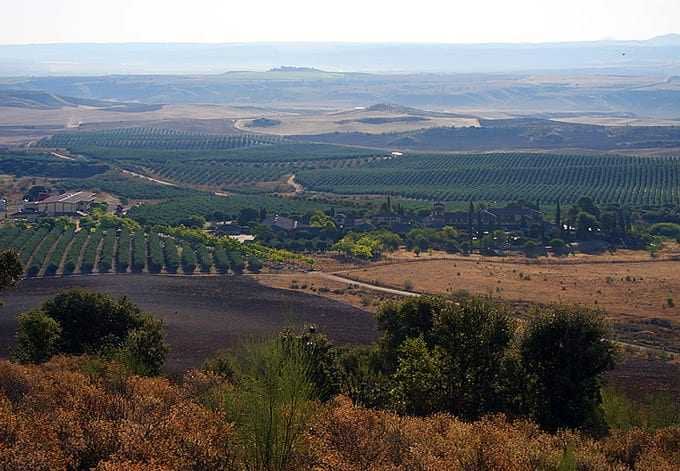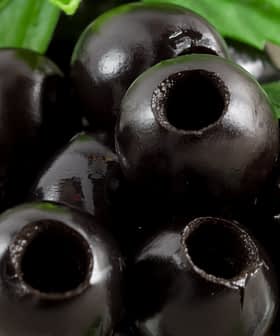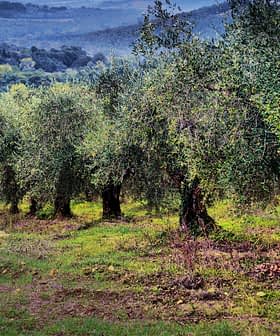
Close to El Carpio de Tajo, half-way between Toledo and Talavera de la Reina, lies the Casas de Hualdo mill, distinguished with the award for the best of all those operating in Spain. This happened in May 2012 and just a few months later, its landscape was also classified as the most beautiful in the oil world. These awards have added to the list of achievements the quality of its extra virgins has been building on since the beginning. Extra virgins made of olives produced on the family estate. There are no secrets behind this success. It simply reflects a passion for a job well done that reconciles the concepts of quality and quantity.
The last hydrological year in Spain has been classified as one of the driest in recent history. Nonetheless, the arrival of autumn appears to have brought a respite, generously dishing out buckets of rain. And the land, with its thirst finally quenched has re-blossomed in a second, exultant spring as if in a desperate attempt to make up for lost time before the harsh winter months bear down on it.
And so, it was with all of its splendour restored that the groves of Casas de Hualdo received us at the beginning of November. An estate in Toledo with an endless view of rolling horizons from the foothills of the Montes de Toledo to the fertile lowlands of the river Tajo.
In this privileged natural setting, both big and small game hides easily, camouflaged among the lush, almost virgin, vegetation among which the Mediterranean undergrowth merges with the centenary meadows abundant with seasonal crops as diverse as alfalfa, pistachio, peas, wheat, corn or poppies.
Among all these plantations, far removed from the chromatic variations so typical of this time of year, the olive trees spread over various sites, defining the horizon with the characteristic green of their foliage which at the same time contrasts with the extensive colour palette provided by all the myriad materials that make up the land.
These trees, precisely ordered in rows and separated from each other by various plantation frames, receive water from a sophisticated watering system controlled from the buildings that oversee the daily activity of Casas de Hualdo. Along with these, also integrated into the setting, a complete and functional mill was built just a few years ago, transforming the estate into an authentic “terroir”.
Observed from any of the hills surrounding the mill, it looks like the illustration of a very lovely picture postcard. This is how it seemed to us and must also be how the jury of the international reward Extrascape saw it too, as on its first edition, it granted its highest distinction to the awe-inspiring beauty of this unique setting, as well as the unrivalled quality of the extra virgins produced here.
Casas de Hualdo in figures
The immense estate extends over a surface area of 3200 hectares, of which, over 600 are dedicated to the cultivation of around 300,000 olive trees. Located at an altitude of around 500 metres, these are distributed between 4 highly characteristic varietals: Picual, Arbequina, Cornicabra and Manzanilla Cacereña. The fruit obtained from them is milled at an average temperature of 23 ºC in a mill built in 2009.
 Quality and quantity are not incompatible
Quality and quantity are not incompatible
Our visit to Casas de Hualdo coincided with the frenzy that always surrounds the olive harvest period. Immersed in the hubbub of this exciting scene, we saw how the harvest methods used here not only prevent damage from being inflicted on the fruit, but also guarantee rapid transportation to the mill to avoid any other type of deterioration.
Thanks to these practices, the ultimate aim is to endow the oil with maximum excellence. An objective which, judging by its long list of awards and its recent international ISO 22.000 certification, the company has successfully achieved, thus destroying the idea that there is an inversely proportional relationship between quality production and large quantity production.
To achieve this, the estate not only relies on the experience and efforts of its employees who make this initiative possible, but also the incalculable collaboration of the Universidad Politécnica de Madrid, to which it grants its installations and lands for all sorts of trials and studies relating to the olive tree cultivation. Along these lines, at present they are studying the differences between oil production according to the various sunshine levels the plants receive, the watering systems and the geographic orientation of the hedgerow olive grove system. Thus, Casas de Hualdo can claim to having a laboratory of its very own, which will undoubtedly benefit it as the researchers progress.
Technology and the environment
Casas de Hualdo is an incredibly large estate. So much so, in fact, that it shelters verdant flora and autochthonous fauna that share the space with all sorts of crops. Cohabitation is, in all cases, harmonious and balanced, which is something the company has always worked towards.
In the specific case of the olive grove, environmental respect materializes in the shape of a series of measures undertaken, that range from allowing grass to grow among the trees to protect the soil from erosion: decanting of the vegetation water generated in the olive oil extraction process and use of solid residues as fertilisers; or the use of the pomace oil obtained in the milling as a fuel to heat and provide hot water to the entire complex.
Many of these practices would be unfeasible without the intervention of the most cutting-edge technology. The same technology that allows for the impressive mill to function which, inaugurated in November 2009, boasts the most modern machinery by Pieralisi on the inside. In a space as overwhelmingly diaphanous as it is immaculate, what particularly catches the eye is the presence of the kneading group, Molinova Tg, this time made up of six independent modules allowing maximum quality even while working with large olive mass quantities.
For these and for other reasons, the Spanish Olive Tree Regions Association (AEMO in Spanish) decided to grant its first prize for the Best National Mill to Casas de Hualdo in the latest edition of its annual competition.








